This blog was written by Madeline Jones, Communication Executive at Elevate Communication. Madeline works within the Corporate Communication pillar, and is passionate about strategic solutions for her clients, and running programs aligned to client corporate social responsibilities.
Strategies to showcase success in PR campaign reporting
Success looks different to everyone – it is one of those widely accepted truths. And it isn’t limited to individuals.
Organisations have their own version of success; one that we as communication practitioners are engaged to help them achieve. When it comes to providing these services to clients and proving our value and expertise, it is paramount that our PR campaign reporting demonstrates this.
This rings particularly true for editorial media coverage activity.
Most practitioners have seen and produced ‘best practice’ media reports taught in university classrooms, and while we are no longer producing them for ‘pseudo clients’, there has been little change to the format many of us use.
Real-life client satisfaction can’t be captured in reports limited to metrics of media targets, estimated audience reach, or, as some of the more seasoned PR practitioners may recall, reporting on the Advertising Value Equivalent (AVE). Good PR leveraging editorial media coverage is more strategic than presence in the mainstream outlets, it nuanced and focussed on achieving results best aligned to your client’s goals, value and brand.
PR can be reputational, positive coverage to negate negative sentiment.
PR can be raising brand awareness, key messaging woven throughout achieved coverage.
PR can be share of voice against competitors, refining and capturing your client’s market.
Just as we are all individuals, so too are our clients. A cookie-cutter approach to reporting should no longer be acceptable in the contemporary PR landscape.
So, how do we compile an impactful PR campaign report?
Get to know your client’s definition of success
Many companies who engage communication professionals are after ‘traditional’ PR; big media hits for big audience reach. Agencies and in-house teams, however, have honed expertise that goes further than that.
Generating valuable impact can only be achieved by understanding who your client is and what they want to achieve with a PR media campaign.
Is it mass coverage Australia-wide, or is it more state-specific?
Is it a story relevant for everyone, or is there an audience that would benefit from it?
By having a robust conversation at the start of a PR campaign, you can nail down expectations and what outcomes the client wants. By defining the ‘end goal’ early on, you can easily tailor your pitch and monitor relevant metrics of success.
Get familiar with your media monitoring platform
Every PR professional has access to a media monitoring platform, and despite the marketing each platform does, they all share the same basic functions. When campaign results come in, they can be plugged into the platform to gain qualitive data to use in your PR campaign reporting.
Most platforms offer widgets that measure:
- Share of voice: your client’s media cut through compared to their competitors
- Trending themes: what phrases / key messages appear most often in achieved coverage
- Potential reach: estimated audience interacting with coverage
- Top Social Echo: coverage with the most exposure
- Sentiment: if achieved coverage has a positive, neutral or negative sentiment to audiences
- Hot maps: geographic locations interacting with achieved coverage
Get analytical and apply learnings
Getting numbers or outputs is one thing, but how to interpret them is another. When compiling a report, take a qualitative approach when reviewing the results – what patterns are emerging? Are certain industries reacting differently than others to your story? Was there a barrier to achieving brand or client mentions?
Whatever the agreed upon KPI or success metric for the PR campaign, be objective in the presentation of quantitative and qualitative outputs.
PR campaigns should be an iterative process. As you get more exposure to your client, their audience and their definitions of success, you will become more confident. Effective PR campaign reporting is an important tool to present the outcomes of media relations and use the results to inform the next media approach.
We would love to hear about your work and your PR goals. If you would like to partner with one of Australia’s leading marketing communication agencies, reach out to the Elevate team at info@elevatecom.com.au.
If you have any questions or would like to chat all things reporting, connect with me on LinkedIn.







